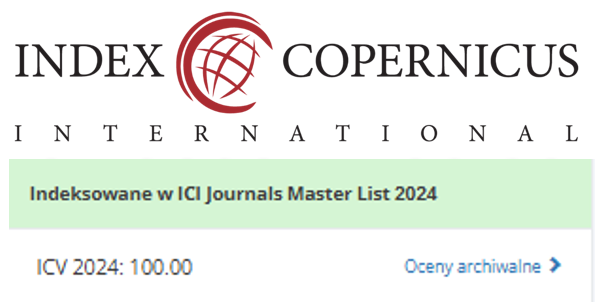The Effect of Digital Media-Based Nutrition Education on Animal-Based Food Feeding Behavior Among Parents of Toddlers: A Quasi-Experimental Study
DOI:
https://doi.org/10.55018/janh.v7i3.377Keywords:
Animal Source Food, Digital Media, Indonesia, Parent Behavior, ToddlerAbstract
Background: Low consumption of animal source foods (ASF) among children under five years children in Indonesia contributes to the high prevalence of stunting. Digital media–based nutrition education can potentially improve parental ASF feeding behavior. However, empirical evidence on its effectiveness in semi-urban and rural settings, particularly studies directly measuring parental behavioral change, remains limited. This study aimed to analyze the effect of digital media–based nutrition education on parental ASF feeding behavior among under-five children.
Methods: This quasi-experimental one-group pretest–posttest study involved 150 parents of under-five children in Sukadana Village, Ciamis Regency, West Java, Indonesia, selected through stratified purposive sampling by hamlet. Inclusion criteria: parents with children <5 years old, having smartphone access, willingness to participate in the intervention, and provision of written informed consent. Exclusion criteria: incomplete pretest or posttest questionnaire data. The intervention consisted of a ±10-minute educational video on the importance of ASF, its sources, safe preparation, and tips to increase consumption, validated by nutrition experts. Feeding behavior was measured using a structured questionnaire (20 items; 3-point Likert scale; Cronbach’s alpha = 0.82). Data were analyzed using paired sample t-tests and effect size calculation (Cohen’s d) with 95% confidence intervals (CI) in SPSS v26.
Results: Digital media–based nutrition education significantly improved parental ASF feeding behavior (p < 0.001), with a large effect size (Cohen’s d = 0.91; 95% CI: 0.69–1.12). The proportion of good behavior increased from 28.0% to 84.0%, while fair and poor behaviors decreased from 43.3% to 12.7% and from 28.7% to 3.3%, respectively.
Conclusion: Digital media–based nutrition education is efficacious in improving parental ASF feeding behavior in semi-urban settings. This strategy has the potential to be integrated into stunting prevention programs in primary healthcare, community health posts, and community-based interventions. Recommendation: Implementation should be accompanied by healthcare worker support and continuous monitoring to ensure sustainable behavior change
Downloads
References
Ahmad, D., Afzal, M., & Imtiaz, A. (2020). Effect Of Socioeconomic Factors On Malnutrition Among Children In Pakistan. Future Business Journal, 6(1), 1–11. https://doi.org/10.1186/s43093-020-00032-x
Ainy, A., Febry, F., & Safriantini, D. (2021). Potential Barriers in Implementing Local-Food-Based Complementary Feeding Practice. Jurnal Ilmu Kesehatan Masyarakat, 12(2), 117–127. https://doi.org/10.26553/jikm.2021.12.2.117-127
Anggraeni, L. D., Toby, Y. R., & Rasmada, S. (2022). Analysis of Nutrient Intake on Nutritional Status of Under Five Year Children. Faletehan Health Journal, 8(02), 92–101. https://doi.org/10.33746/fhj.v8i02.191
Ashari, R., Basyir, V., Afriwardi, A., Mayetti, M., Yusrawati, Y., & Desmawati, D. (2023). Factors Related to Stunting Incidence in Toddlers Aged 24-59 Months in the Working Area of Kambang Community Health Center, Pesisir Selatan District. Contagion: Scientific Periodical Journal of Public Health and Coastal Health, 5(2), 530. https://doi.org/10.30829/contagion.v5i2.15097
Assabila, S. Y., & Sefrina, L. R. (2022). Kajian Pustaka: Penggunaan Media Digital Sebagai Alternatif Media Pendidikan Gizi Pada Remaja Di Masa Pandemi COVID-19. Poltekita: Jurnal Ilmu Kesehatan, 16(1), 118–125. https://doi.org/10.33860/jik.v16i1.693
Au, L. E., Whaley, S., Rosen, N. J., Meza, M., & Ritchie, L. D. (2016). Online And In-Person Nutrition Education Improves Breakfast Knowledge, Attitudes, And Behaviors: A Randomized Trial Of Participants In The Special Supplemental Nutrition Program For Women, Infants, And Children. Journal of the Academy of Nutrition and Dietetics, 116(3), 490–500. https://doi.org/10.1016/j.jand.2015.10.012
Barker, M., Dombrowski, S. U., Colbourn, T., Fall, C. H. D., Kriznik, N. M., Lawrence, W. T., Norris, S. A., Ngaiza, G., Patel, D., & Skordis-Worrall, J. (2018). Intervention Strategies To Improve Nutrition And Health Behaviours Before Conception. The Lancet, 391(10132), 1853–1864.
Beal, T., Tumilowicz, A., Sutrisna, A., Izwardy, D., & Neufeld, L. M. (2018). A Review Of Child Stunting Determinants In Indonesia. Maternal & Child Nutrition, 14(4), e12617. https://doi.org/10.1111/mcn.12617
Bidira, K., Tamiru, D., & Belachew, T. (2022). Effect Of Nutritional Education On Anthropometric Deficits Among Pre-School Aged Children In South West Ethiopia: Quasi-Experimental Study. Italian Journal of Pediatrics, 48(1), 8. https://doi.org/10.1186/s13052-022-01201-0
Birhanu, F., Yitbarek, K., Bobo, F. T., Atlantis, E., & Woldie, M. (2024). Undernutrition In Children Under Five Associated With Wealth-Related Inequality In 24 Low- And Middle-Income Countries From 2017 To 2022. Scientific Reports, 14(1), 3326. https://doi.org/10.1038/s41598-024-53280-0
Daba, A. K., Murimi, M., Abegaz, K., & Hailu, D. (2024). Animal Source Food Consumption Practice And Factors Associated Among Infant And Young Children From Selected Rural Districts In Ethiopia: A Cross-Sectional Study. Plos One, 19(7), e0306648. https://doi.org/10.1371/journal.pone.0306648
Dallagiacoma, G., Alberti, F., & Odone, A. (2023). The Efficacy Of Digital Media Tools To Promote A Healthy Diet In Children: A Systematic Review Of Intervention Studies. Acta Bio-Medica: Atenei Parmensis, 94(S3), e2023157–e2023157. https://doi.org/10.23750/abm.v94iS3.14293
De Rosso, S., Ducrot, P., Chabanet, C., Nicklaus, S., & Schwartz, C. (2022). Increasing Parental Knowledge About Child Feeding: Evaluation Of The Effect Of Public Health Policy Communication Media In France. Frontiers in Public Health, 10, 782620. https://doi.org/10.3389/fpubh.2022.782620
Fatima, S., Manzoor, I., Joya, A. M., Arif, S., & Qayyum, S. (2020). Stunting And Associated Factors In Children Of Less Than Five Years: A Hospital-Based Study. Pakistan Journal of Medical Sciences, 36(3), 581–585. https://doi.org/10.12669/pjms.36.3.1370
Fite, M. B., Tura, A. K., Yadeta, T. A., Oljira, L., & Roba, K. T. (2022). Consumption Of Animal Source Food And Associated Factors Among Pregnant Women In Eastern Ethiopia: A Community-Based Study. Plos One, 17(6), e0270250. https://doi.org/10.1371/journal.pone.0270250
Fitriyani, P., Mulyono, S., & Handayani, T. W. (2024). The Importance of Nutrition Education to Change Mother’s Knowledge and Behaviour in Achieving Adequate Nutrition for Toddler. Proceedings of the International Conference on Nursing and Health Sciences, 5(1), 127–134. https://doi.org/10.37287/picnhs.v5i1.2848
Hamza, H. A., Oumer, A., Kabthymer, R. H., Ali, Y., Ahmed Mohammed, A., Shaka, M. F., & Assefa, K. (2022). Individual And Community-Level Factors Associated With Animal Source Food Consumption Among Children Aged 6-23 Months In Ethiopia: Multilevel Mixed Effects Logistic Regression Model. Plos One, 17(4), e0265899. https://doi.org/10.1371/journal.pone.0265899
Haryani, V. M., Putriana, D., & Hidayati, R. W. (2023). Animal-Based Protein Intake is Associated with Stunting in Children in Primary Health Care of Minggir. Amerta Nutrition, 7. https://doi.org/10.20473/amnt.v7i2SP.2023.139-146
Katoch, O. R. (2022). Determinants Of Malnutrition Among Children: A Systematic Review. Nutrition (Burbank, Los Angeles County, Calif.). https://doi.org/10.1016/j.nut.2021.111565
Kementerian Kesehatan RI. (2023). Survey Kesehatan Indonesia (SKI).
Kueppers, J., Stein, K. F., Groth, S., & Fernandez, I. D. (2018). Maternal And Child Dietary Intake: The Role Of Maternal Healthy-Eater Self-Schema. Appetite, 125, 527–536. https://doi.org/10.1016/j.appet.2018.01.014
Labrique, A. B., Wadhwani, C., Williams, K. A., Lamptey, P., Hesp, C., Luk, R., & Aerts, A. (2018). Best Practices In Scaling Digital Health In Low And Middle Income Countries. Globalization and Health, 14, 1–8. https://doi.org/10.1186/s12992-018-0424-z
Marliany, H., Apipudin, A., & Ramdani, A. S. (2022). Factors Associated With Nutritional Status in Toddler. Jurnal Kesehatan STIKes Muhammadiyah Ciamis, 9(2), 45–55. https://doi.org/10.52221/jurkes.v9i2.339
Mey, D., Ridayani, R., San, N., Kristianto, J., & Muslim, M. (2020). Penggunaan Media Edukasi Gizi Aplikasi Electronic Diary Food (Edifo) Dan Metode Penyuluhan Serta Pengaruhnya Terhadap Pengetahuan Ibu Hamil. Quality: Jurnal Kesehatan, 14(1), 1–10. https://doi.org/10.36082/qjk.v14i1.93
Morales-Cahuancama, B., Verdezoto, N., Gonzales-Achuy, E., Quispe-Gala, C., Bautista-Olortegui, W., Hinojosa-Mamani, P., & Aparco, J. P. (2024). Exploring Children’s Knowledge of Healthy Eating, Digital Media Use, and Caregivers’ Perspectives to Inform Design and Contextual Considerations for Game-Based Interventions in Schools for Low-Income Families in Lima, Peru: Survey Study. JMIR Formative Research, 8(1), e49168. https://doi.org/10.2196/49168
Mulualem, D., Henry, C. J., Berhanu, G., & Whiting, S. J. (2016). The Effectiveness Of Nutrition Education: Applying The Health Belief Model In Child-Feeding Practices To Use Pulses For Complementary Feeding In Southern Ethiopia. Ecology of Food and Nutrition, 55(3), 308–323. https://doi.org/10.1080/03670244.2016.1161617
Noviana, U., Ekawati, H., Hasinuddin, M., Haris, M., & Mufarika, M. (2024). Stunting Prevention Behavior Among Children Under Two Years Based On Integrated Behavior: A Model Development. https://doi.org/10.20473/pmnj.v10i1.47366
Pavithra, G., Kumar, S. G., & Roy, G. (2019). Effectiveness Of A Community-Based Intervention On Nutrition Education Of Mothers Of Malnourished Children In A Rural Coastal Area Of South India. Indian Journal of Public Health, 63(1), 4–9. https://doi.org/10.4103/ijph.IJPH_383_17
Pierre, G., & Dzinamarira, T. (2019). A Scoping Review On Barriers To Implementation Of Health Education Programs In Low To Middle Income Countries. International Journal of Community Medicine and Public Health, 6(8), 3651. https://doi.org/10.18203/2394-6040.ijcmph20193503
Rizkika, M., Ruwiah, R., & Fithria, F. (2023). Factors Related to Stunting Incidence in Toddlers in the Working Area of the Waborobo Health Center, Betoambari District, Baubau City in 2023. Journal of Social Research, 2(9), 3031–3043. https://doi.org/10.55324/josr.v2i9.1363
Sahputra, R. R., & Kurniawan, R. (2024). Klasterisasi Data Balita Stunting di Kecamatan Wilayah Kabupaten Ciamis Berdasarkan Prevalensi Dengan Menggunakan Algoritma K-Means. JATI (Jurnal Mahasiswa Teknik Informatika), 8(2), 2451–2461. https://doi.org/10.35134/komtekinfo.v10i3.423
Seyyedi, N., Rahmatnezhad, L., Mesgarzadeh, M., Khalkhali, H., Seyyedi, N., & Rahimi, B. (2021). Effectiveness Of A Smartphone-Based Educational Intervention To Improve Breastfeeding. International Breastfeeding Journal, 16, 1–8. https://doi.org/10.1186/s13006-021-00417-w
Shekar, M., Kakietek, J., D’Alimonte, M. R., Rogers, H. E., Eberwein, J. D., Akuoku, J. K., Pereira, A., Soe-Lin, S., & Hecht, R. (2017). Reaching The Global Target To Reduce Stunting: An Investment Framework. Health Policy and Planning, 32(5), 657–668. https://doi.org/10.1093/heapol/czw184
Stellefson, M., Paige, S. R., Chaney, B. H., & Chaney, J. D. (2020). Evolving Role Of Social Media In Health Promotion: Updated Responsibilities For Health Education Specialists. International Journal of Environmental Research and Public Health, 17(4), 1153. https://doi.org/10.3390/ijerph17041153 Full text linksCite
Sukamto, I. S., Hartono, R. S., & Mulyani, S. (2021). Community Health Center Worker Perspectives On Stunting Risk Factors And Challenge Of Stunting Prevention Program: A Qualitative Study. Community Health, 44(05).
Sultan, M. I., & Amir, A. S. (2023). The Utilization of Digital Media in Health Communication in Indonesia. JRK (Jurnal Riset Komunikasi), 14(2), 215–233.
Velardo, S., & Drummond, M. (2013). Understanding Parental Health Literacy And Food Related Parenting Practices. Health Sociology Review, 22(2), 137–150. https://doi.org/10.5172/hesr.2013.22.2.137
Wakefield, J., Godwin, J., Li, Z. R., Meisner, J., Okonek, T., Paige, J., Gao, P., Fuglstad, G., Fix, M., Riebler, A., Dong, T., Wu, Y., Jiang, Z., Augusto, O., Aleshin-guendel, S., & Kenny, A. (2021). Subnational Under-five Mortality Estimates , 1990 – 2019. 1990–2019.
World Health Organization. (2023). Stunting, Wasting, Overweight And Underweight.
World Health Organization (WHO). (2024). Stunting Prevalence In Children Aged < 5 Years (%) (Health Inequality Monitor).
Wulandary, W., & Sudiarti, T. (2021). Nutrition Intake And Stunting Of Under-Five Children In Bogor West Java, Indonesia. J Food Sci Nutr, 7(104), 2. https://doi.org/10.24966/FSN-1076/100104
Yanti, S., Hartati, S., & Eliza. (2023). Education About the Provision of Supplementary Feeding to Toddler Mothers. Journal of Applied Nursing and Health, 5(1), 16–24. https://doi.org/10.55018/janh.v5i1.122
Zarnowiecki, D., Mauch, C. E., Middleton, G., Matwiejczyk, L., Watson, W. L., Dibbs, J., Dessaix, A., & Golley, R. K. (2020). A Systematic Evaluation Of Digital Nutrition Promotion Websites And Apps For Supporting Parents To Influence Children’s Nutrition. International Journal of Behavioral Nutrition and Physical Activity, 17, 1–19. https://doi.org/10.1186/s12966-020-0915-1
Downloads
Published
How to Cite
Issue
Section
License
Copyright (c) 2025 Daniel Akbar Wibowo, Dini Nurbaeti Zen

This work is licensed under a Creative Commons Attribution-ShareAlike 4.0 International License.


















